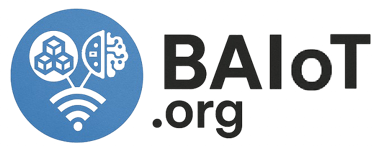Case Study Proposal: Decentralized Digital Identity for Climate Migrants
BAIoT.org proposes a decentralized digital identity system using Blockchain, AI, and IoT to empower climate migrants with secure, portable identities, enabling access to essential services and restoring dignity through ethical, inclusive technology.
10/4/20255 min read


Case Study Proposal: Decentralized Digital Identity for Climate Migrants
Empowering Displaced Communities through Blockchain, AI, and IoT
Presented by BAIoT.org
Executive Summary
As climate change accelerates, millions of people are being displaced by rising sea levels, extreme weather events, and environmental degradation. These climate migrants often lose not only their homes but also their legal identities, access to services, and social safety nets. Without verifiable documentation, they face barriers to healthcare, education, employment, and financial inclusion.
This case study proposal introduces a bold, disruptive initiative by BAIoT.org to pilot a Decentralized Digital Identity (DDI) System for climate migrants. By leveraging the convergence of Blockchain, Artificial Intelligence (AI), and the Internet of Things (IoT), this system aims to provide secure, portable, and privacy-preserving digital identities that empower displaced individuals to reclaim agency, access essential services, and participate in rebuilding their lives.
1. The Challenge: Identity in the Age of Displacement
The United Nations estimates that by 2050, over 1.2 billion people could be displaced due to climate-related factors. Unlike traditional refugees, climate migrants often cross borders without formal recognition, making them invisible to host governments and international aid systems.
Key challenges include:
Loss of documentation: Floods, fires, and conflict often destroy birth certificates, IDs, and health records.
Lack of legal recognition: Many displaced individuals fall outside existing refugee frameworks and are denied basic rights.
Barriers to services: Without identification, migrants struggle to access healthcare, education, banking, and housing.
Data fragmentation: Aid organizations and governments lack interoperable systems to track and support mobile populations.
Privacy risks: Centralized databases are vulnerable to breaches, surveillance, and misuse.
These issues create a vicious cycle of exclusion, poverty, and vulnerability — one that demands a new approach to identity, trust, and inclusion.
2. The BAIoT.org Solution: Decentralized Digital Identity (DDI)
BAIoT.org proposes a pilot project in partnership with a humanitarian NGO and a regional government in a climate-affected area (e.g., a coastal region in South Asia or Sub-Saharan Africa). The project will deploy a Decentralized Digital Identity System that integrates Blockchain, AI, and IoT to provide climate migrants with secure, portable, and self-sovereign identities.
2.1 Blockchain for Self-Sovereign Identity
Decentralized Identifiers (DIDs): Each individual receives a unique, cryptographically secure identity that they control.
Verifiable Credentials: Health records, education certificates, and work history are issued by trusted entities and stored on a tamper-proof ledger.
Smart Contracts: Automate verification processes for service providers (e.g., clinics, schools, banks) without exposing sensitive data.
Interoperability: Built on open standards (e.g., W3C DID, VC) to ensure compatibility across borders and platforms.
2.2 AI for Identity Verification and Risk Assessment
Biometric Matching: Facial recognition, voice, and fingerprint data used (with consent) to verify identity in the absence of documents.
Anomaly Detection: AI models flag suspicious activity or identity fraud attempts.
Needs Assessment: AI analyzes user data (e.g., health, location, history) to prioritize aid delivery and recommend services.
2.3 IoT for Real-Time Context Awareness
Wearable Devices: Optional low-cost wristbands or smart cards store encrypted identity data and enable offline verification.
Geolocation Sensors: Track movement patterns (with consent) to support family reunification, resource allocation, and emergency response.
Environmental Sensors: Monitor local conditions (e.g., air quality, temperature, flooding) to contextualize identity data and inform risk profiles.
3. Expected Outcomes
This pilot aims to demonstrate how decentralized digital identity can transform the lives of climate migrants and displaced communities.
3.1 Humanitarian Impact
Restored identity for individuals who have lost official documentation.
Improved access to healthcare, education, and financial services.
Faster aid delivery through verified eligibility and needs-based targeting.
3.2 Systemic Change
Reduced dependency on centralized, siloed databases.
Increased trust between migrants, governments, and NGOs.
Scalable model for cross-border identity recognition.
3.3 Ethical Innovation
Privacy-first design with user-controlled data sharing.
Consent-based systems that respect autonomy and dignity.
Open-source tools to ensure transparency and adaptability.
4. Strategic Alignment with BAIoT.org’s Mission
This initiative embodies BAIoT.org’s mission to promote the ethical, inclusive, and impactful convergence of emerging technologies:
Ethical: Prioritizes privacy, consent, and human rights.
Inclusive: Designed for the most vulnerable and underserved populations.
Impactful: Addresses a growing global crisis with scalable, tech-enabled solutions.
Collaborative: Brings together NGOs, governments, technologists, and communities.
5. Implementation Roadmap
Phase 1: Stakeholder Engagement and Co-Design
Partner with a humanitarian NGO and local government.
Conduct participatory workshops with affected communities.
Define use cases (e.g., healthcare access, school enrollment, aid distribution).
Phase 2: Infrastructure Setup
Deploy blockchain nodes and identity registries.
Develop mobile and offline-first identity apps.
Distribute IoT devices (e.g., smart cards, wearables) as needed.
Phase 3: Enrollment and Verification
Enroll participants using biometric and demographic data (with informed consent).
Issue verifiable credentials from trusted institutions (e.g., health clinics, schools).
Train local staff and community leaders on system use and governance.
Phase 4: Service Integration
Onboard service providers (e.g., clinics, banks, NGOs) to accept DDI.
Implement smart contracts for automated verification and aid disbursement.
Launch citizen dashboards for managing identity and data permissions.
Phase 5: Monitoring, Evaluation, and Scaling
Track key metrics (e.g., service access rates, identity recovery time, user satisfaction).
Conduct independent audits and publish findings.
Explore expansion to other regions and use cases (e.g., stateless populations, refugees).
6. Risk Management and Mitigation
Technical Risks
Connectivity limitations: Use offline-capable devices and mesh networks.
Data loss or corruption: Mitigated through decentralized storage and encryption.
Biometric errors: Use multimodal verification and human-in-the-loop review.
Ethical Risks
Privacy violations: Enforce strict data minimization and user consent protocols.
Exclusion: Ensure accessibility for people with disabilities, low literacy, or no biometrics.
Surveillance misuse: Prevent government overreach through decentralized governance and transparency.
Operational Risks
Resistance from authorities: Engage early and align with legal frameworks.
Lack of trust: Build credibility through community-led implementation and open-source transparency.
Funding gaps: Diversify support through grants, philanthropy, and impact investment.
7. Broader Impact and Replicability
This pilot is designed to be a blueprint for global adoption. By using open standards, modular architecture, and community-driven governance, the DDI system can be adapted for:
Refugee camps and displaced populations worldwide.
Stateless communities lacking formal recognition.
Post-disaster recovery zones where documentation is lost.
Undocumented urban populations in informal settlements.
It also supports multiple Sustainable Development Goals (SDGs), including:
SDG 1: No Poverty
SDG 10: Reduced Inequalities
SDG 16: Peace, Justice, and Strong Institutions
8. Call to Action
The future of identity must be decentralized, inclusive, and resilient. As climate change reshapes our world, we must ensure that no one is left behind — especially those forced to leave everything behind.
BAIoT.org invites governments, NGOs, technologists, and funders to join us in building a new model for digital identity — one that restores dignity, enables access, and empowers displaced communities to thrive.
Ways to Get Involved
Partner with us to co-deploy the pilot in your region.
Contribute to open-source development of DDI tools and protocols.
Sponsor training programs for local implementers and community leaders.
Join our global coalition for ethical digital identity and climate justice.
Visit BAIoT.org to learn more, access resources, and become part of this transformative movement.
Conclusion
This case study proposal presents a bold, disruptive vision: a world where identity is not tied to geography, bureaucracy, or paper — but to people. By combining Blockchain, AI, and IoT, we can create a new kind of identity system: one that is portable, secure, and human-centered.
The Decentralized Digital Identity System for Climate Migrants is not just a technological innovation — it’s a humanitarian imperative. It’s a chance to rewrite the rules of inclusion, resilience, and trust in the digital age.
BAIoT.org is ready to lead this change. Are you ready to join us?
Advocate
Pioneering the convergence of blockchain, AI, and IoT.
Connect
Support
Copyright © 2025 BAIoT.org. All rights reserved.
